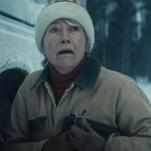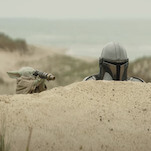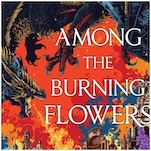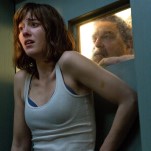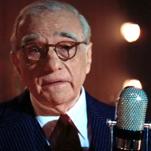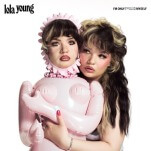Showtime’s The Trade and TV’s Irresponsible Treatment of the War on Drugs
Photo: Our Time Projects/Courtesy of SHOWTIME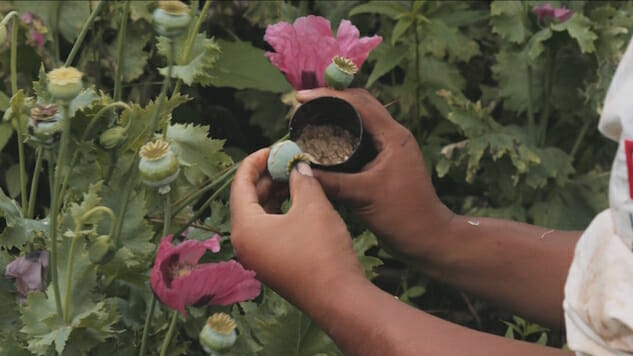
OK: Let’s talk about the War on Drugs.
So, Showtime’s got a new—what? “Reality series” seems wrong. “Docuseries” seems wrong. So there’s this series. It’s called The Trade. And it’s about the opioid crisis.
Indulge me in a sidebar: Not too long ago, I had a gardening accident in which one of my fingers was crushed. As you might imagine, this was incredibly painful. The urgent care doctor did what he could for the injury and sent me to the pharmacy for an opioid painkiller. I had to wait a while because an older gentleman in front of me was having a problem. See, the price of Epi-pens had just shot through the ceiling and the guy was now unable to afford a medication without which he might die of anaphylaxis in a severe allergic reaction. He left without it. Two minutes later, I walked out of the pharmacy with a gigundo bottle of oxycodone.
The price tag for this scheduled narcotic? About $4.00.
“I didn’t eavesdrop on purpose,” I said to the pharmacist, “but I could hear that last guy. Does it bug you at all that you have to turn away people who can’t afford their Epi-pens but you can hand narcotics to someone like me for the price of a latte?”
“Every day,” he said. “Every single day.” He looked at my maimed finger and added, “I bet that hurts like a bitch.” I agreed that it did, and left with my bag of cheap, plentiful opiates.
Oh: I totally have a point. Watch The Trade and what you’ll see is basically three braided threads. It is technically well executed. We open on farmers harvesting poppy resin in Guerrero, Mexico. Then we cut to families in Georgia and Ohio whose lives have been rent and torqued by heroin, and the police officers fighting the losing battle of saving addicts from themselves. The stories toggle, exposing various areas of the lives of suppliers, producers and users. Again: Well-executed. Nicely photographed. Minimalist, undramatic esthetic. There is no narration, no context, no explicit thread tying these stories together. I’m not saying that’s not a valid way to make a docuseries—it is. I’m just noting for the record that no one is going to get a lot of actually important facts here.
Fact: An estimated 75 to 80% of current opiate addicts became addicted as a result of properly, appropriately prescribed prescription meds, like the Percocet I was given for my shattered finger bones.
Fact: Pain medications derived from the opium poppy have been in use since about 3400 BCE. It was cultivated for its painkilling and euphoria-inducing properties in ancient Sumeria and it has been in use, by physicians and non-physicians, continuously. It gives us morphine, codeine, and a host of other very useful and very potentially addictive medicines.
Fact: Approximately one in four people given opiates in legitimate medical situations struggles with addiction. Withdrawal from opiates can be anywhere from uncomfortable to potentially lethal.
Fact: Heroin laced with Fentanyl (which is the substance responsible for a huge percentage of overdoses) largely comes from China. The Trade doesn’t seem to get into that pertinent fact, posing this serious dilemma as a struggle between down-and-out American youths and… pretty much Mexico.
Fact: More than 29,000 homicides occurred in Mexico in 2017. Drug cartel violence is the primary contributor to that statistic.
Sorry, I got distracted again. I think maybe because The Trade blew my hair back with the stuff it doesn’t say. Excuse me, where is the medical profession in this program? Where are the pharmaceutical companies? Where is the history? Where is the science? Yes, poverty drives some farmers in poor areas to turn to opium poppies even if they wistfully long to grow heirloom corn and be free of scary-ass cartel hitmen. Yes, heroin from Mexico crosses the border into the US. Regularly. It’s one facet of a huge picture. At a staff meeting in one scene, a woman notes that there has been a massive uptick in heroin laced with Fentanyl, a synthetic opioid somewhere between 10 and 75 times stronger than morphine (depending whom you ask) and very likely to be lethal if you don’t realize it’s in your syringe. She seems to know it generally enters the U.S. from China, not Mexico. Yet we immediately cut back to Mexican farmers in paramilitary gear.
Detective Mark Edwards feels that one way to mitigate the pain of the opioid crisis is “to hold the drug dealers responsible.” And in the three episodes of The Trade made available by press time, he certainly gives it the ol’ college try. We trail him as he follows the junk, arrests addicts, hands over their children to Child Protective Services, and tries to get smalltime dealers to give up the identities of bigger-fish distributors. You learn things, yes. Some of these things you probably already know. Such as: Junkies don’t make good television because they are really, really damned boring. Have you ever known a heroin addict? I have. They are painfully uninteresting, because heroin turns most people into zombie reptiles who are deeply depressed and deeply depressing. Drug dealers? Ditto. They are boring! Every once in a while, there is a kingpin with bizarre charisma, but as much fun as it might be to watch a portrayal of Pablo Escobar or Joaquin Guzman in a televised drama, in real life even El Chapo is just a really successful sociopath. Cops? There are good ones and bad ones, but again, most are not brimming over with telegenic magic. So to allow an entire series to unfold with only these characters is dangerous from a watchability perspective.
But what the much more distressing lapse in The Trade is what it doesn’t give us: Namely, the thousand-pound gorilla that is the total bullshit of the so-called War on Drugs. Are the individuals in The Trade for real? I’m certain they are. I’m certain these detectives care about ridding their cities of the scourge of opiate addiction and increasingly rampant lethal (or hospital-taxingly non-lethal) overdose. I am sure the squalor in which some of these people live and even raise children is painful and upsetting to them. I am sure the parents of the junkies featured in this show love their kids. I’m certain they are trying to help. I’m certain their pain and fear are real. I’m certain that very few heroin addicts enjoy being heroin addicts. None of that is what I mean by bullshit.
I’m talking about the mountainous evidence that, dating back to the Nixon administration, and perhaps even to Prohibition, government and industry have colluded for specific political purposes around the appearance of control of illicit substances. They have many levels of vested interest in appearing to “fight” drug addiction while massively profiting from it. I’m sorry: You don’t have to be a conspiracy theorist or even particularly cynical to grok that.
Fact: Worldwide, the largest producer of heroin is Afghanistan, but Afghan heroin accounts for a small percentage of heroin sold on the streets in the U.S. The majority of that originates in Mexico and Central America. There does not appear to be significant commercial cultivation of poppies in the U.S. (However, the plant is widely and legally purchased as an ornamental garden specimen.)
Fact: The poppy seeds on your bagel, if you germinated them, would grow into the exact same plant that is the source of morphine and heroin and the model for all the synthetic variants ever made, including Fentanyl. Kooky, huh? I have a patch of them in my backyard. DEA: Take note, I am growing opium poppies. Right now.
Fact: Opioid overdose deaths in the United States are currently estimated at something like 115 per day.
The Trade follows people who buy, sell, produce and inject heroin. They are not upper-class, college educated people. They are obvious. And they are sad to watch. But what a truly illuminating and penetrating program on the opioid epidemic would need to do is go way, way past the stereotypes of tatted, hollow-eyed working-class white people in cities with depressed economies and immigrant Mexican women who distribute junk for shadowy cartel bosses on the other side of the U.S. border. It would need to show us the history of the spin-doctoring shit show that is the trillion-dollar “War on Drugs,” in all of its racially-motivated, docility-inducing, prison-enriching, pharmaceutical stock price skyrocketing wonder. It would need to show us the wealthy suburban housewives who are hooked on opiates they get from doctors. It would need to show us not only how heroin destroys lives but how destroyed lives lead to heroin use. Because that cuts both ways. It would need to show that governments collude with and profit from drug cartels.
Fact: Legal U.S. sales of opioid painkillers make over $9.5 billion a year for pharmaceutical companies. Drugs to treat addiction, drugs to treat overdose and drugs to treat side effects (such as constipation) bring in another roughly $4 billion.
Fact: None of the facts laid out in this article are facts I obtained from The Trade, with the exception of the thing about most of the Fentanyl actually coming from China and the number of people who are estimated to be dying.
Sorry: I think Showtime grossly squandered an opportunity here. Karl Marx’s quote about religion being the “opium of the people” is often bent into quips about television being the opium of the people, but right now it seems that the opium of the people is freaking opium, and television might be a great way to shed light on why, rather than merely film it happening. This crisis is real, it is claiming real people’s lives, it is bereaving real families, orphaning real children, destroying real human potential, and it isn’t stopping. That might be largely because people seem to be unable or unwilling (and in the end it amounts to the same thing) to get past the “drugs bad; stop the Mexicans” mode of looking at it. At this particular political moment we simply cannot afford to do that. It’s not that the depictions in The Trade are lies: I’m sure they aren’t.
But someone needs to start telling the rest of the story. Like now.
The Trade premieres Friday, Feb. 2 at 9 p.m. on Showtime.
Amy Glynn’s backyard is chock-full of psychoactive plants. The day she crushed her finger she was transplanting passionfruit vines, not poppies, though that would have been delightfully ironic.












